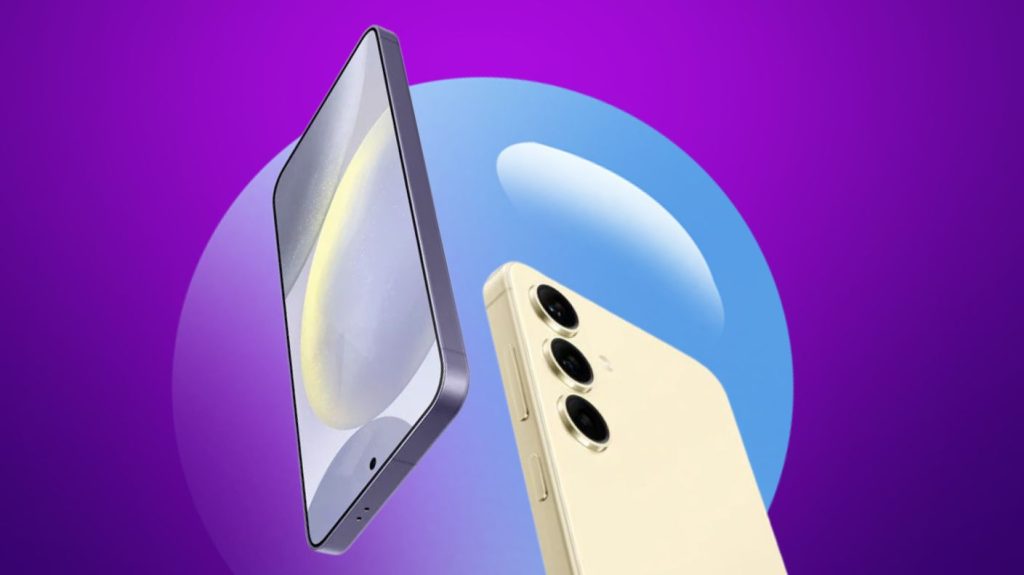Transferring data from your iPhone to an Android device doesn’t have to be a headache. Start by ensuring both devices are fully charged and you’ve backed up important data. You can use a Lightning to USB-C cable or do it wirelessly with strong Wi-Fi. During the Android setup, choose the data types you want to move, like contacts, photos, and videos. Apps like Samsung Smart Switch make the process smooth. After transferring, confirm all data is accessible and settings are correct. If you love details, there’s more to explore on ensuring a seamless conversion and data security.
Preparation for Data Transfer

Before transferring data from your iPhone to an Android device, make certain both devices are fully charged to avoid interruptions. Disable iMessage on your iPhone by going to Settings > Messages and toggling off iMessage. Backup your important data to iCloud or locally. Gather the necessary cables and familiarize yourself with the Android setup process, including connecting to Wi-Fi, for a smooth changeover.
Using a Cable for Transfer
To transfer your data using a cable, start by gathering the necessary equipment, such as a Lightning to USB-C cable. Make sure both your iPhone and Android devices are fully charged and updated. Follow the on-screen instructions to connect the devices and select the data you want to transfer.
Necessary Equipment Checklist
Make sure both your iPhone and Android devices are fully charged and gather the necessary cables for a seamless data transfer. You’ll need a USB-C to Lightning cable or a USB-A to USB-C adapter. Power on your Android device and make certain it’s ready to receive data. Once connected, trust the connection on your iPhone to proceed with the data transfer.
Step-by-Step Guide
Now that you’ve gathered the necessary equipment, let’s walk through the steps to transfer your data from iPhone to Android using a cable. Fully charge and update both devices. Connect them using a Lightning to USB-C cable. On your Android, select ‘Copy your data.’ Tap ‘Trust’ on your iPhone, sign into your Google Account, and choose the data types to transfer. This method guarantees a quick, thorough migration.
Wireless Transfer Methods

Wireless transfer methods let you move your contacts, photos, and videos from your iPhone to an Android device without using any cables. Make certain both devices are fully charged and connected to strong Wi-Fi. During setup, select the ‘No cable’ option on your new Android, and follow the steps. Apps like Samsung Smart Switch and Switch To Android provide simple instructions for seamless transfers.
Transferring Specific Data Types
To effectively move specific data types like contacts, photos, and music, you can use a variety of tools and methods designed for seamless transfers from iPhone to Android. Sync contacts with your Google account or import a .vcf file. Use Google Photos for images and videos. Transfer music via iTunes or streaming services like YouTube Music. Migrate calendar events with iCloud sync or an .ics file.
Post-Transfer Verification

Ascertain that all your data has successfully transferred to your Android device by verifying each specific data type and functionality. Check the following:
- Contacts and Messages: Verify that all contacts and messages are present and test calling functionality.
- Photos and Videos: Guarantee all media files are accessible in Google Photos.
- Apps and Settings: Confirm that all apps are downloaded, functioning correctly, and settings like Google Assistant are configured.
Accessory Compatibility
Shifting to an Android device doesn’t mean you have to replace your existing accessories, as most are fully compatible. Android supports a wide range of gadgets, from Bluetooth headphones to USB devices via OTG adaptors. Fast Pair technology makes connecting Bluetooth devices a breeze. You’ll even find that your AirPods work seamlessly, ensuring you don’t lose your preferred audio experience.
Ensuring Data Security

When transferring data from an iPhone to an Android device, you’ll want to guarantee your information remains secure throughout the process. Utilize device encryption and cloud services like Google Drive to protect your data during transfer. Additionally, regular backups and managing app permissions through the privacy dashboard will help maintain data integrity and security.
Data Encryption Methods
Protecting your data during the transfer from iPhone to Android is critical, and employing robust encryption methods guarantees your sensitive information remains secure. Consider these options:
- MobileTrans: Use this tool for encrypted, direct transfers.
- Wired Connections: Opt for USB transfers to circumvent cloud vulnerabilities.
- End-to-End Encrypted Services: Services like Proton Drive offer enhanced protection for uploads and downloads.
Ensuring encryption safeguards your data effectively.
Backup Best Practices
Before you transfer data from your iPhone to an Android device, it’s important to implement robust backup practices to confirm your data remains secure. Always back up your iPhone to iCloud or a computer. Use Google One for Android backups. Regularly update your backup settings. Consider third-party tools like MobileTrans. Ascertain your chosen cloud service encrypts data during transfer to protect sensitive information.
| Method | Connection | Speed | Advantages | Limitations |
|---|---|---|---|---|
| Samsung Smart Switch | Cable/Wireless | Fast | User-friendly; supports all data | Limited to Samsung devices |
| Google Photos | Wireless | Moderate | Free cloud storage for photos | Requires Wi-Fi and account setup |
| Move to Android App | Wireless | Slow | Supports various Android models | Slower for large data volumes |
Final Thoughts
You’ve successfully moved your data from iPhone to Android. By prepping your devices, choosing the right transfer method, and verifying everything, you’ve guaranteed a smooth changeover. Don’t forget to check accessory compatibility and keep your data secure. Now, enjoy your new Android device with all your important information intact. With these steps, switching platforms doesn’t have to be intimidating. You’ve got this!





